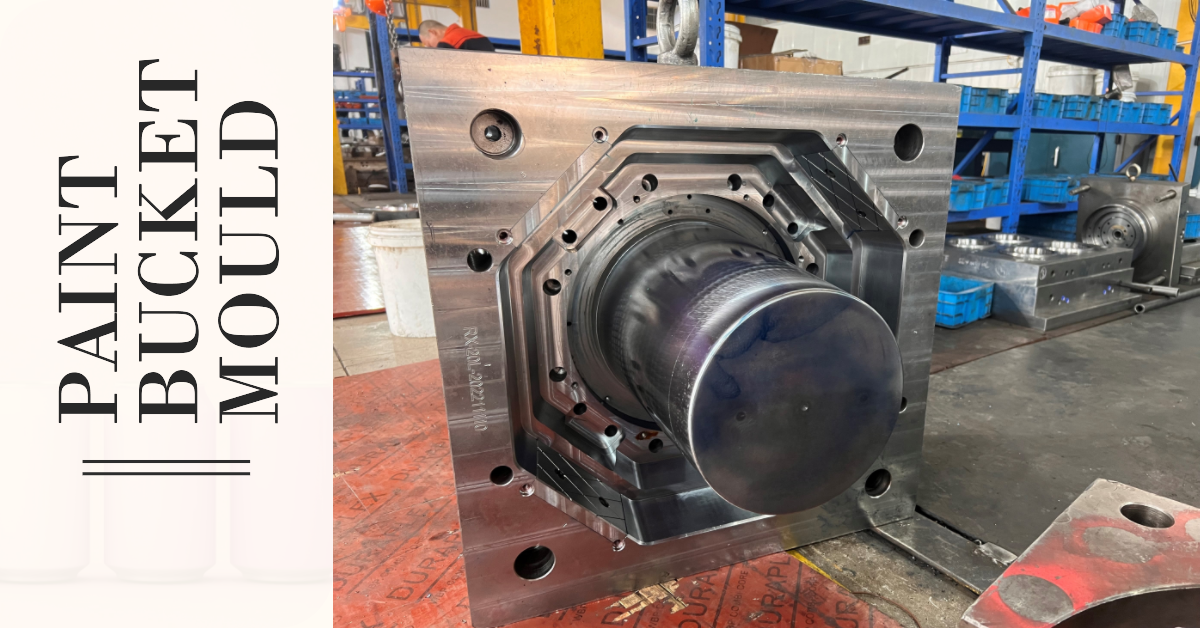
Paint bucket molds are an essential component in the manufacturing of paint buckets. These molds are used to create the shape and design of the bucket, and are made using materials such as HDPE, LDPE, or PP to ensure durability and stability. The bucket handles and lids are injection molded using easy-to-mold PP and PE plastic. All thermoplastic materials are sourced from carefully vetted suppliers to ensure the highest quality of the final product.
Manufacturers of paint bucket molds use advanced technology and design techniques to create molds that are precise and accurate. The molds are designed to be efficient and cost-effective, while still maintaining the desired quality of the final product. The molds are also designed to be easy to use and maintain, with features such as quick-release mechanisms and easy-to-clean surfaces.
Overview of Paint Bucket Molds
There are many types of injection molding buckets, paint bucket molds are used to produce plastic paint buckets or pails. These molds are designed to create containers that are durable, lightweight, and easy to handle. They are widely used in the paint industry for packaging and transporting paint products. In this section, we will discuss what paint bucket molds are and the different types available.
What are Paint Bucket Molds?
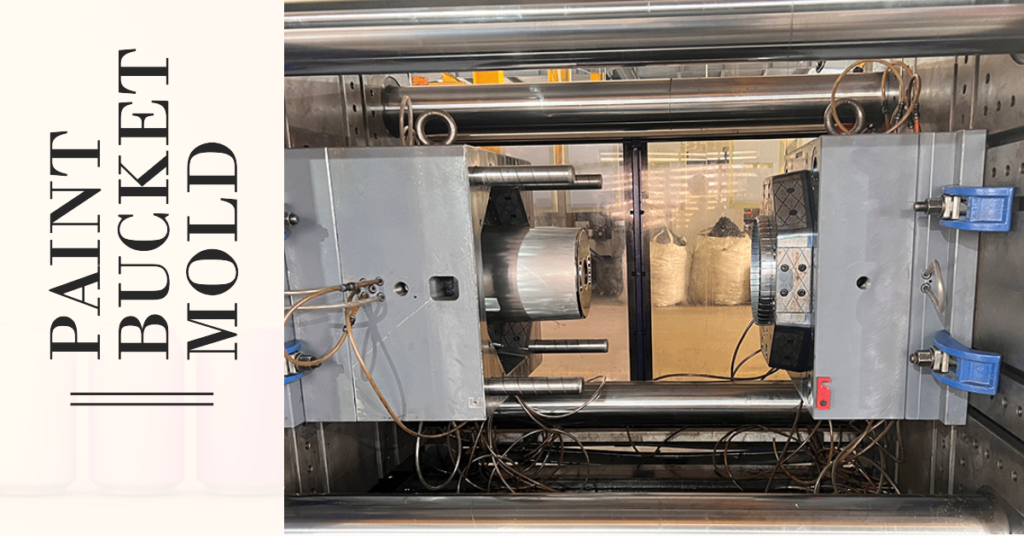
Paint bucket molds are designed to produce plastic containers that can hold paint products. They are made of high-quality steel and are precision-engineered to create buckets with consistent dimensions and high-quality finishes. These molds are typically used in plastic paint bucket making machine, which melt plastic pellets and inject them into the mold cavity to create the finished product. The molds can be customized to produce buckets of different sizes, shapes, and colors.
Types of Paint Bucket Molds
There are several types of paint bucket molds available, including:
- Single-cavity molds: These molds produce one bucket at a time and are ideal for small-scale production runs.
- Multi-cavity molds: These molds have multiple cavities and can produce several buckets at once, which increases production efficiency.
- Thin-wall molds: These molds are designed to produce buckets with thinner walls, which reduces material costs and makes the buckets lighter and easier to handle.
- Beryllium copper molds: These molds have copper inserts that help dissipate heat more efficiently, which reduces cycle times and improves production efficiency.
The type of mold used will depend on the manufacturer’s production needs, design requirements, and technology available. Quality is also an important consideration when selecting a mold, as it can affect the durability and performance of the finished product.
Materials Used in Paint Bucket Molds
Paint bucket molds are made using a variety of materials to ensure durability, stability, and efficiency in the manufacturing process. The following are some of the most commonly used materials in paint bucket molds:
P20 Steel
P20 steel is a low-alloy tool steel that is commonly used in plastic mold manufacturing. It has good toughness and wear resistance, making it ideal for mold cores and cavities. P20 steel is also easy to machine and polish, which reduces manufacturing time and cost. It is often used in the production of paint bucket molds due to its high durability and strength.
718H Steel
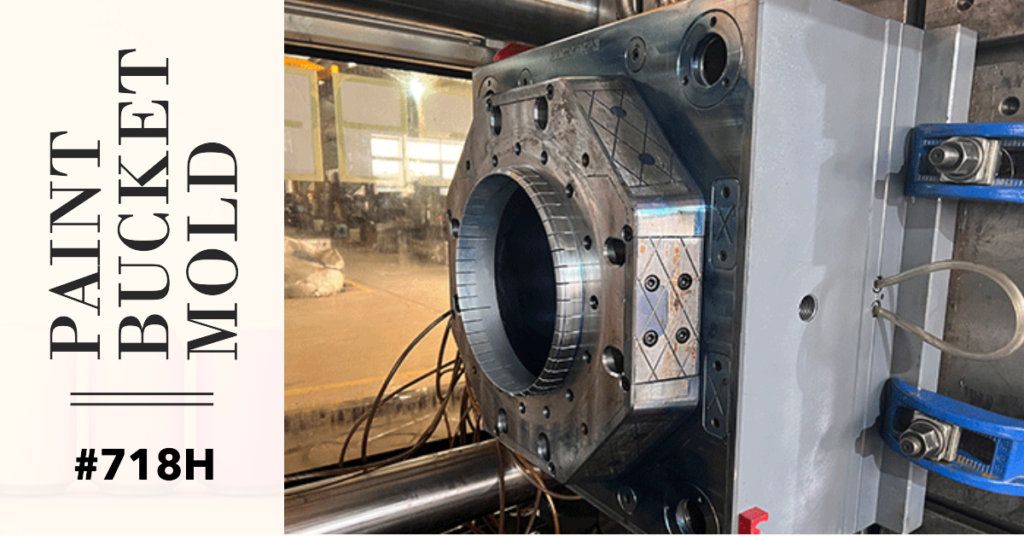
718H steel is a pre-hardened plastic mold steel that is commonly used in the manufacturing of high-quality molds. It has excellent corrosion resistance and high-temperature properties, making it ideal for use in the production of paint bucket molds. 718H steel is often used in the manufacturing of mold cores and cavities, as well as other components of paint bucket molds.
Beryllium Copper (BeCu)
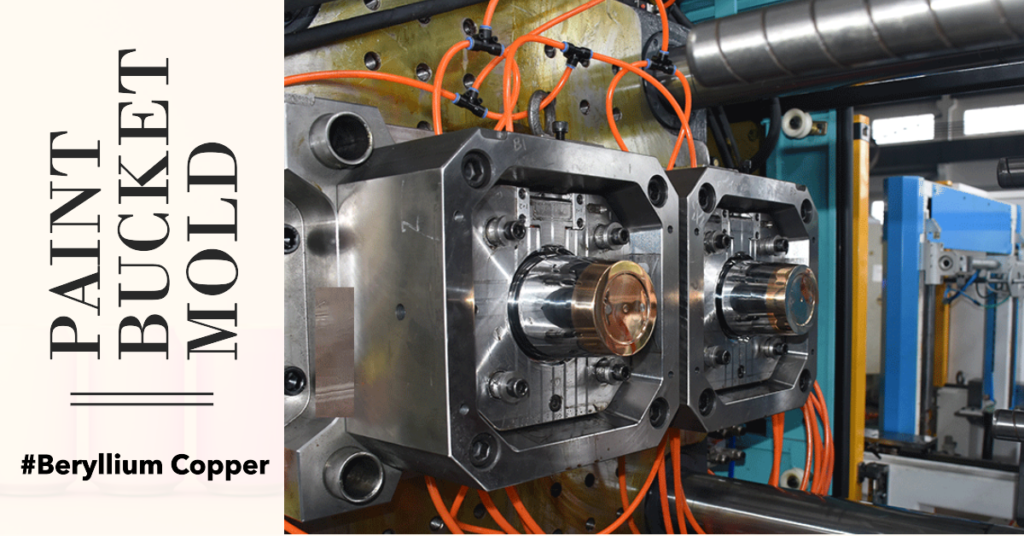
Beryllium copper is a non-ferrous alloy that is commonly used in the manufacturing of plastic molds. It has excellent thermal conductivity and high strength, making it ideal for use in the production of paint bucket molds. Beryllium copper is often used in the manufacturing of mold cores and cavities, as well as other components of paint bucket molds.
Other materials that may be used in the production of paint bucket molds include high-density polyethylene (HDPE), polypropylene (PP), polystyrene (PS), and other types of plastic. These materials are often used in the manufacturing of paint bucket handles, lids, and other components of paint bucket molds.
Design Considerations for Paint Bucket Molds
Designing a paint bucket mold requires careful consideration of several factors that can affect the quality and efficiency of the molding process. The following sub-sections highlight some of the key design considerations for paint bucket molds:
Bucket Size and Shape
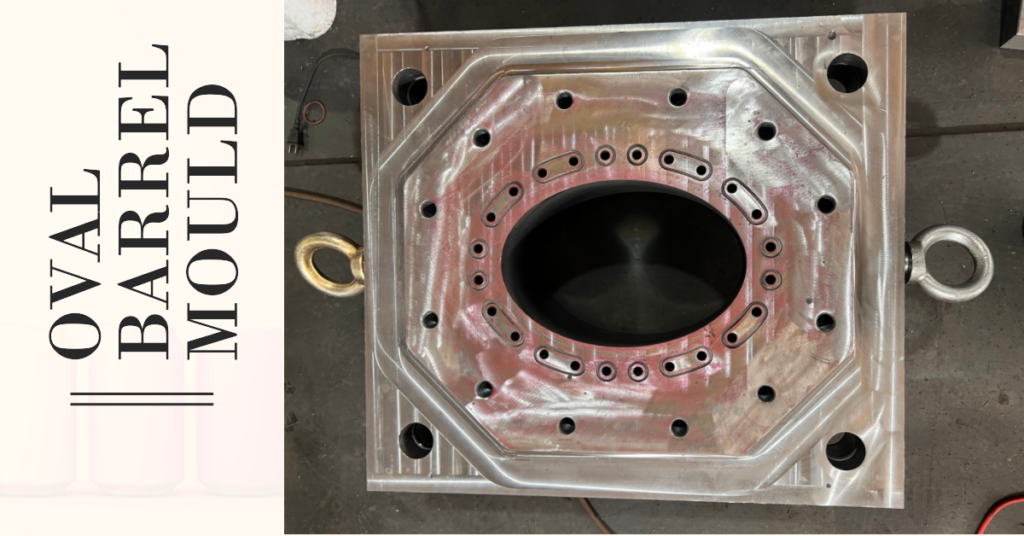
The size and shape of the paint bucket can affect the mold design in several ways. For example, a larger bucket may require a deeper cavity, which can increase the pressure during molding and reduce the lifespan of the mold. Similarly, a more complex bucket shape may require additional cooling channels or ejection mechanisms to ensure proper molding and ejection. Therefore, it is important to carefully evaluate the bucket size and shape before designing the mold.
Runner System
The runner system is a critical component of the mold design, as it controls the flow of molten plastic into the mold cavity. A well-designed runner system can reduce cycle time, minimize waste, and improve overall part quality. In the case of paint bucket molds, a hot runner system may be necessary to ensure proper filling of the deep cavity and thin walls of the bucket.
Cooling System
The cooling system is another important consideration for paint bucket molds, as it can affect the cycle time and part quality. A properly designed cooling system can help to reduce cycle time and improve part consistency by ensuring that the plastic cools uniformly throughout the mold. In addition, a well-designed cooling system can help to prevent warping or other defects that can occur during the cooling process.
Ejection System
The ejection system is responsible for removing the molded part from the mold cavity. In the case of paint bucket molds, a complex ejection system may be necessary to ensure that the bucket is properly ejected without damage. For example, a stripper plate may be necessary to remove the bucket from the mold, or a specialized ejection pin may be required to prevent damage to the thin walls of the bucket.
Gate Location and Type
The gate location and type can also affect the quality and efficiency of the molding process. A properly located gate can help to ensure proper filling of the mold cavity and reduce the risk of defects or part damage. Similarly, the gate type can affect the flow of plastic into the mold cavity, which can affect the part quality and cycle time. Therefore, it is important to carefully evaluate the gate location and type before designing the mold.
Manufacturing Process of Paint Bucket Molds
CNC Machining
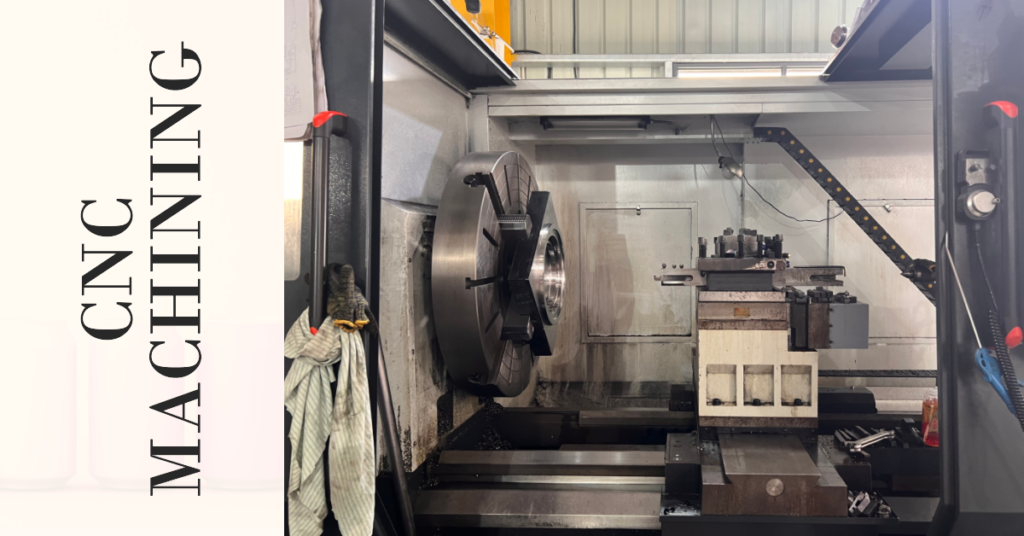
The first step in manufacturing paint bucket molds is to create a 3D design of the mold using computer-aided design (CAD) software. Once the design is complete, it is fed into a computer numerical control (CNC) machine, which uses the design to carve a mold out of a block of steel or aluminum. CNC machining is a precise and efficient way to create molds with complex shapes and high accuracy.
EDM (Electrical Discharge Machining)
EDM is a process that uses electrical discharges to shape the mold. This process is used to create the intricate details and shapes that cannot be achieved with CNC machining. EDM is especially useful for creating small holes and cavities in the mold.
Surface Treatments
After the mold is machined, it undergoes a series of surface treatments to improve its durability and lifespan. These treatments include polishing, heat treatment, and coating. Polishing smooths out any rough edges or imperfections on the mold’s surface. Heat treatment hardens the mold, making it more resistant to wear and tear. Coating the mold with a protective layer also helps to prevent damage and corrosion.
Quality Control
Throughout the manufacturing process, the mold undergoes rigorous quality control checks to ensure that it meets the required specifications. These checks include dimensional inspections, material testing, and visual inspections. Any defects or deviations from the design are corrected before the mold moves on to the next stage of the process.
Bucket Mould Test
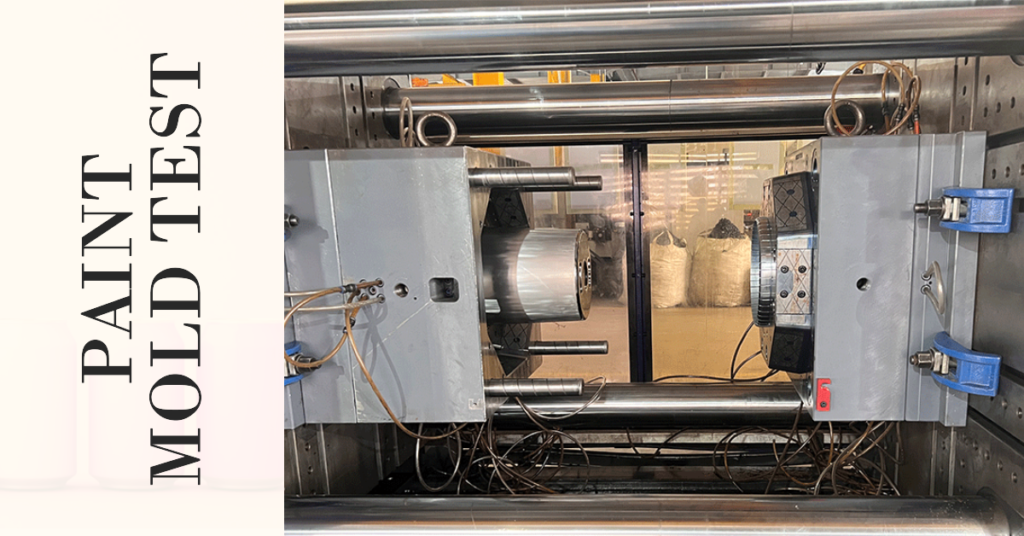
Once the mold is complete, it is tested to ensure that it produces high-quality paint buckets. This test involves injecting molten plastic into the mold and examining the resulting paint bucket for defects or imperfections. Any issues are addressed before the mold is approved for use in production.
In conclusion, the process of manufacturing paint bucket molds is a complex and precise one that requires a high level of skill and expertise. By using CNC machining, EDM, surface treatments, quality control, and bucket mold testing, manufacturers can create molds that produce high-quality paint buckets with consistent quality and durability.
Common Problems in Paint Bucket Moulds
Paint bucket molds are used to create plastic paint buckets and pails in various sizes. While these molds are designed to be durable and long-lasting, they can still experience common problems that can affect their performance and lifespan. The following are some of the most common issues that can arise in paint bucket molds:
Corrosion
Corrosion is a common problem in paint bucket molds, especially when the molds are made of steel. Corrosion can occur due to exposure to moisture, chemicals, or other environmental factors. Over time, corrosion can weaken the mold and cause it to break down, leading to defects in the final product.
To prevent corrosion, it is important to properly maintain the molds and keep them clean and dry. Regular cleaning and inspection can help identify any signs of corrosion early on, so that repairs or replacements can be made as needed.
Wear and Tear
Wear and tear is another common problem in paint bucket molds, especially in molds that are used frequently. Over time, the constant pressure and movement of the mold can cause it to wear down, leading to defects in the final product.
To prevent wear and tear, it is important to properly maintain the molds and replace any worn or damaged parts as needed. Regular inspections can help identify any signs of wear and tear early on, so that repairs or replacements can be made before the mold is too damaged to use.
Deformation
Deformation is another common problem in paint bucket molds, especially in molds that are made of plastic. Deformation can occur due to exposure to heat, pressure, or other environmental factors. Over time, deformation can cause the mold to lose its shape, leading to defects in the final product.
To prevent deformation, it is important to properly maintain the molds and keep them away from sources of heat or pressure. Regular inspections can help identify any signs of deformation early on, so that repairs or replacements can be made as needed.
Maintenance for Paint Bucket Moulds
Regular maintenance of paint bucket moulds is essential to ensure the quality and longevity of the moulds. This section covers the three main aspects of maintaining paint bucket moulds: regular cleaning, monitoring and adjusting the moulding process, and repairing damaged moulds.
Regular Cleaning
Regular cleaning of paint bucket moulds is important to prevent contamination and ensure consistent quality of the moulded products. The moulds should be cleaned after every production run to remove any residual paint, debris, or other contaminants. The cleaning process should involve disassembling the moulds, washing them with a mild detergent, and drying them thoroughly before reassembling them.
Monitoring and Adjusting the Moulding Process
Monitoring and adjusting the moulding process is important to ensure that the moulds are producing high-quality paint buckets. This involves regularly checking the temperature, pressure, and cycle time of the moulding process to ensure that they are within the recommended range. Any deviations from the recommended range should be addressed immediately to prevent defects in the paint buckets.
Repairing Damaged Paint Bucket Moulds
Over time, paint bucket moulds may become damaged due to wear and tear, or due to accidents during the moulding process. It is important to repair any damage to the moulds as soon as possible to prevent further damage and ensure consistent quality of the moulded products. The repair process may involve replacing damaged parts, re-machining the moulds, or re-coating the moulds with a protective layer.
Overall, regular maintenance of paint bucket moulds is essential to ensure the quality and longevity of the moulds. By following the recommended maintenance procedures, packaging services can ensure that their paint bucket molds are producing high-quality paint buckets consistently.
Conclusion
Paint bucket molds are an essential component of the paint supply industry, providing a cost-effective and efficient way to produce high-quality paint pails. The use of HDPE in the manufacturing of plastic paint buckets ensures that they are durable, resistant to impact and wear, and suitable for a wide range of applications.
When selecting a plastic paint bucket supplier, it is important to consider the quality of the molds used in the production process. Poor quality molds can lead to defects in the final product, resulting in potential leaks and other issues. It is also important to consider the supplier’s experience and reputation in the industry.
Thin wall injection molding is an advanced manufacturing process that allows for the production of plastic paint buckets with very thin walls. This process is highly efficient and cost-effective, making it an ideal solution for high-volume production runs.
Overall, plastic paint buckets are an excellent choice for a wide range of painting applications. They are durable, lightweight, and easy to handle, making them an ideal choice for both professional and DIY use. With the right supplier and quality molds, plastic paint buckets can provide years of reliable service.
Q: What are the essential factors to consider when choosing a plastic paint bucket mold?
A: The essential factors to consider when choosing a plastic paint bucket mold include the quality of the plastic mold, the mold cavity and ejection system, cooling system, wall thickness, cycle time, high speed injection capabilities, and compatibility with the intended injection molding machine. It’s also crucial to select a mold making supplier that has experience and expertise in creating plastic bucket moulds.
Q: How do high speed injection molding machines contribute to the plastic paint bucket manufacturing process?
A: High speed injection molding machines play a critical role in the plastic paint bucket manufacturing process by ensuring efficient, precise, and consistent production. They help in achieving shorter cycle times, improving product design and thin walled container production, and maintaining high precision and quality plastic outcomes.
Q: What materials are commonly used in making plastic paint buckets and their molds?
A: The common paint bucket raw materials include PP (Polypropylene), HDPE (High Density Polyethylene), and PE (Polyethylene). For plastic paint bucket molds, materials such as aluminium and steel are typically used to ensure durability and longevity.
Q: How does the injection moulding process work in the production of plastic paint buckets?
A: The injection moulding process involves melting plastic pellets and injecting them into a pre-designed mold cavity using high pressure. The plastic is then cooled and solidified inside the mold, taking on the desired shape of the bucket. Once the plastic is completely solid, the mold is opened, and the formed bucket is ejected, ready for use or further processing.
Q: What role do wall thickness and cycle time play in plastic paint bucket production?
A: Wall thickness is crucial in plastic paint bucket production as it directly influences cycle time, material usage, end product weight, and overall durability. A thinner wall allows for shorter cycle times, less material usage, but may compromise the bucket’s strength. Cycle time refers to the time taken to complete one production cycle, from injection to ejection, and it impacts production efficiency and cost-effectiveness.
Q: How are lids made for plastic paint buckets?
A: Lids for plastic paint buckets are also made using the plastic injection moulding process. A separate lid mold is designed and attached to the injection molding machine. The plastic material is then injected into the mold cavity, cooled, solidified, and ejected, producing a matching lid for the plastic paint bucket.
Q: Can you have custom plastic paint bucket molds made for your specific needs?
A: Yes, custom plastic paint bucket molds can be made to suit specific needs, such as unique product design, logo, or brand identity. Having a prototype made ensures that the mold will meet your specific requirements. It’s essential to select a highly skilled mold maker who can understand and execute your design specifications accurately.
Q: What is the typical volume capacity range for plastic paint buckets?
A: Plastic paint buckets come in various sizes and capacities, typically ranging from 1-litre up to 30-litre volumes. The most common capacities are 10L and 20L buckets, which cater to a wide variety of paint packaging services and customer requirements.
Q: How do you ensure quality in the plastic paint bucket mold-making process?
A: Ensuring quality in the plastic paint bucket mold-making process involves using high-quality materials, following precise product design guidelines, maintaining optimal wall thickness, and utilizing state-of-the-art injection molding machines. It’s also essential to partner with a reputable mold maker who has a proven track record for delivering quality plastic bucket moulds.
Q: What is the role of cooling systems in plastic bucket injection molding?
A: Cooling systems play a critical role in the plastic bucket injection molding process, as they help regulate the temperature of the molten plastic within the mold. A well-designed cooling system ensures quick and even cooling of the molded plastic, reducing cycle time and enhancing product quality. Effective cooling systems also minimize warping and other potential defects in the final product.

